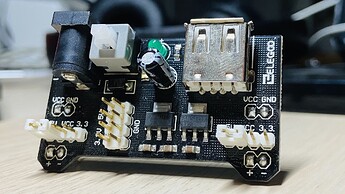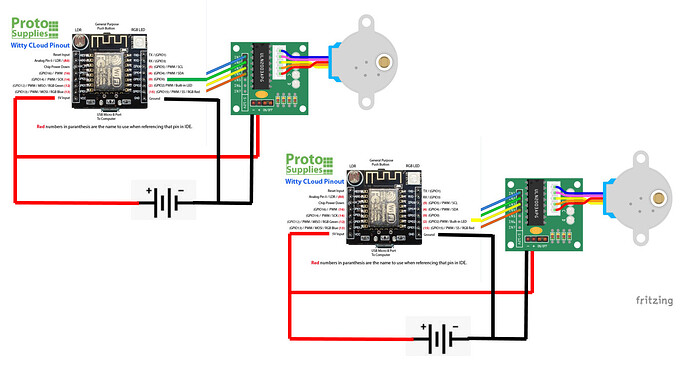I'm using an ESP8266 Witty Cloud board to drive a 28BYJ-48 stepper motor.
Example Hardware:
https://cookierobotics.com/042/ (NOTE: <-- I found this page super useful)
After I upload a simple program to drive the stepper using GPIO 4, 0, 2, and 15, I see the board's built-in LEDs blinking as I'd expect since those are driven by the same pins I am connecting to the ULN2003 module.
When I hook up the circuit and power it from an external 5V source, it seems to freeze up and the LEDs are on, but static, and the stepper motor will not turn.
What's odd is I only see this behavior when everything is plugged in when I turn on the power supply. If I unplug the jumpers to GPIO 4, 0, 2, and 15, turn on the power to the board, and then plug the jumpers back into GPIO 4, 0, 2, and 15, everything works fine and the stepper turns.
Because of that odd behavior, I know this isn't a code or wiring issue.
Has anyone seen and overcome this? I'm wondering if there is some special mode I'm entering by having GPIO 4, 0, 2, and 15 grounded when powering up the board?
Here is an example wiring diagram:
To recap:
If I power up that diagram with 5V, the LEDs (and therefore pins) have power and light up, but the motor doesn't turn.
If I unplug the wires to the GPIO pins, power up the board, and then plug in the GPIO pins, the motor turns as expected.





